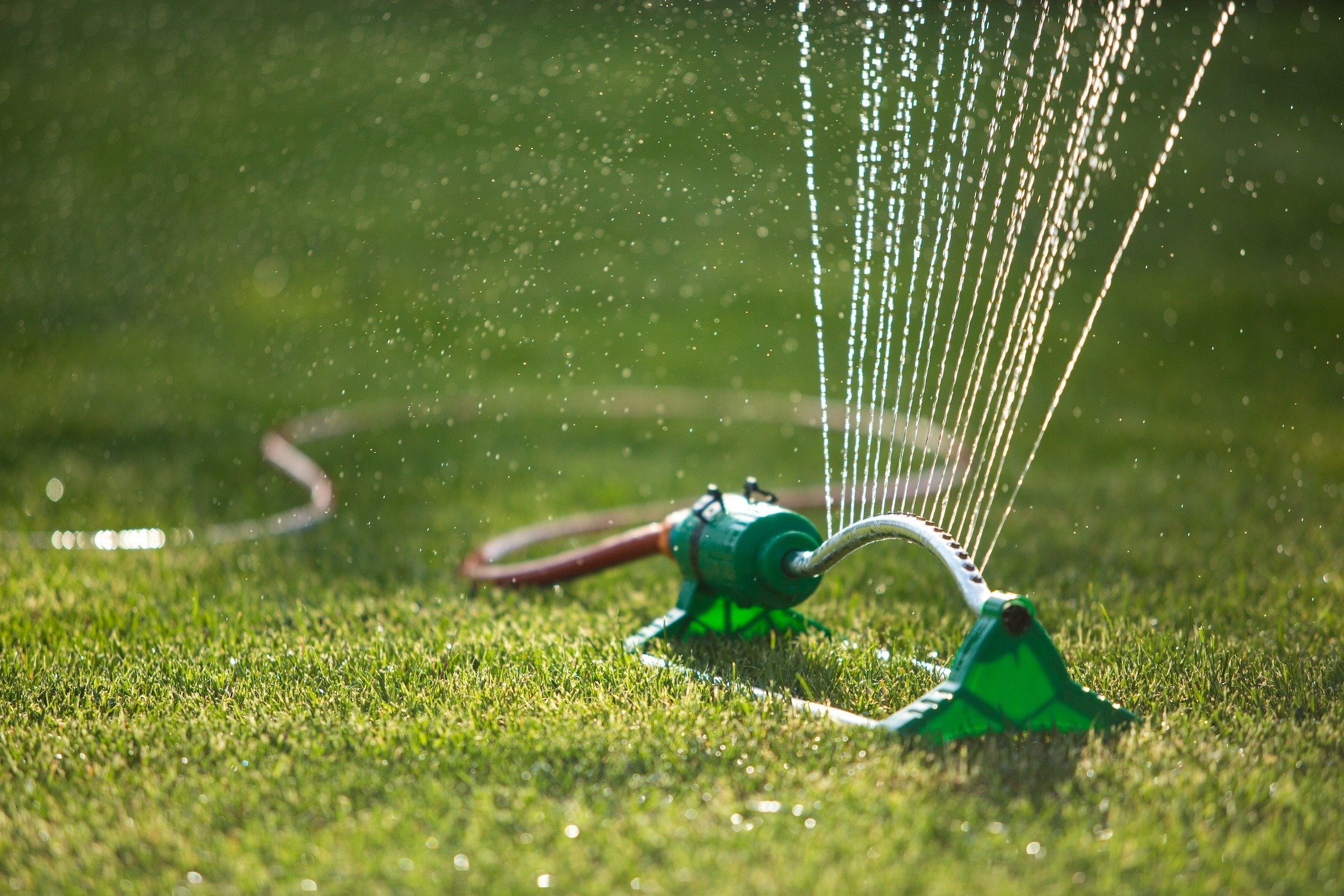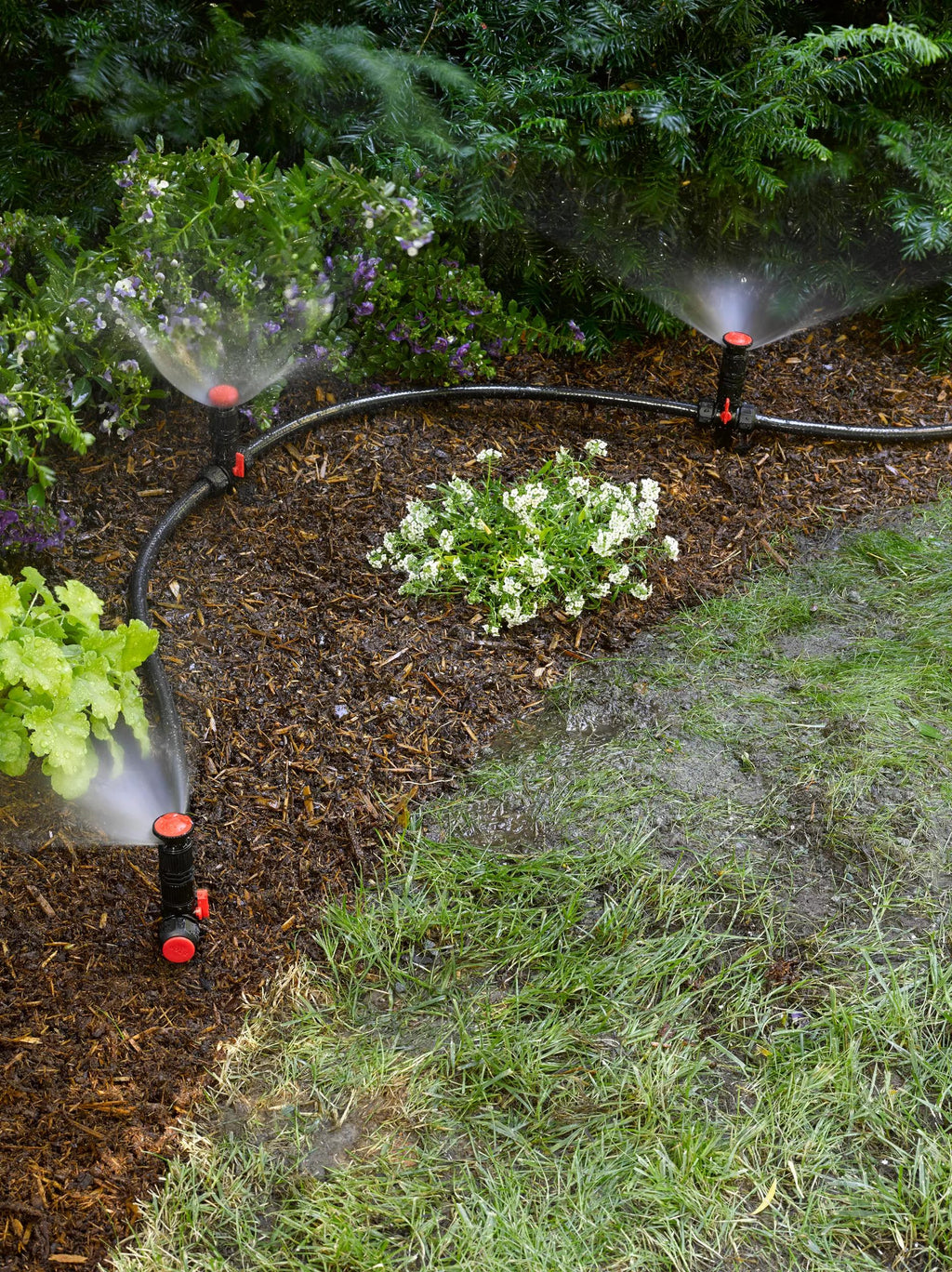Step-by-Step Process for Sprinkler System Installation That Saves Time and Water
Exploring the Most Usual Problems in Sprinkler Equipments and Their Services
Lawn sprinkler are vital for preserving healthy landscapes, yet they usually come across various problems. Common issues include clogged nozzles, broken pipes, and uneven watering patterns. Each of these can considerably impact system performance and water efficiency. Understanding these issues and their remedies is important for any kind of homeowner. The complying with areas will certainly describe normal challenges and the required repairs to keep an automatic sprinkler operating at its finest. What follows might stun those unprepared for maintenance truths.
Clogged Nozzles and Sprinkler Heads
Stopped up nozzles and sprinkler heads are typical concerns that can greatly hinder the efficiency of a sprinkler system. In time, debris such as algae, dust, and mineral build-up can accumulate, obstructing water circulation and resulting in unequal coverage in the yard or yard. This can result in specific locations obtaining insufficient water, while others might become over-saturated.
Routine maintenance is crucial to avoid these clogs. Regular checks can identify any obstructions, and cleansing can usually be accomplished with easy tools like a little brush or a toothpick. Sometimes, soaking blocked parts in vinegar can aid liquify natural resource.
For severe blockages, replacement of the nozzle or head may be required to recover appropriate feature. Dealing with these problems without delay assures that the automatic sprinkler operates efficiently, enhancing and preserving a healthy landscape water use.
Broken Pipeline and Leaks
Broken pipelines and leakages can greatly interrupt the functionality of an automatic sprinkler. Identifying pipe damages very early is vital to protect against additional issues, and comprehending repair work strategies can simplify the procedure. In addition, applying preventative upkeep ideas can help assure the durability of the system and decrease the chance of future problems.
Identifying Pipe Damages
Exactly how can homeowners properly identify pipeline damage in their automatic sprinkler? To begin, they must on a regular basis evaluate their yards for uncommon wet places or pooling water, which might suggest a leak. Furthermore, house owners can monitor their water bills for inexplicable boosts, recommending concealed leaks within the system. Observing the lawn sprinkler heads for uneven spray patterns or inadequate insurance coverage can additionally indicate potential pipeline problems. Furthermore, listening for uncommon sounds, such as hissing or gurgling, may indicate air running away from harmed pipelines. Finally, conducting visual inspections of exposed pipes for splits or deterioration can aid identify troubles. By using these approaches, homeowners can proactively discover and attend to pipe damage in their automatic sprinkler before it leads to more significant issues.
Repair Techniques Review
Resolving pipeline damages in a lawn sprinkler calls for a methodical method to repair work, especially when handling leakages and breaks. The very first step frequently involves situating the broken area, which can be accomplished through aesthetic inspection or stress screening. When determined, the repair strategy might differ; for little leaks, using pipeline sealer or epoxy can efficiently seal the damaged area. In cases of substantial breaks, removing the harmed pipeline section and replacing it with brand-new piping, protected with suitable adapters, is suggested. In addition, making sure appropriate alignment and safeguarding joints will certainly assist prevent future concerns. After repair services, complete testing of the system is important to validate that leaks have been dealt with which the system runs successfully.
Preventative Maintenance Tips
To decrease the danger of broken pipes and leakages in a sprinkler system, routine preventative upkeep is necessary. House owners must routinely examine the system for visible damages, making certain that installations and pipelines are intact. Seasonal modifications are very important; prior to wintertime, systems should be drained to protect against freezing, while spring checks can recognize wear from frost or moving soil. Additionally, keeping the location around lawn sprinkler heads clear of debris aids stay clear of blockages that might result in leakages. Consistently testing water pressure can expose underlying issues, as extreme stress may stress pipelines. Documenting upkeep tasks can aid track performance and recognize persisting troubles, making it much easier to address any issues proactively.
Uneven Watering Patterns
Uneven watering patterns can lead to patchy yards and stressed plants, coming from various reasons such as blocked nozzles or misaligned sprinkler heads. Determining these concerns is vital for reliable repair work and ensuring consistent water circulation across the landscape. Solutions may entail easy upkeep tasks or adjustments to the lawn sprinkler system for optimal performance.
Reasons For Uneven Watering
When an automatic sprinkler falls short to distribute water uniformly throughout a lawn, a number of elements might contribute to this concern. One common cause is incorrect sprinkler head positioning, which can bring about overlapping or insufficient insurance coverage. In addition, clogged nozzles can limit water circulation, resulting in completely dry spots. Variations in water stress can likewise affect distribution, as some locations may get much more water than others. Unequal terrain or soil compaction can affect how water penetrates the ground, leading to irregular absorption. The age of the lawn sprinkler components may result in decreased performance, adding to inconsistent watering patterns. Determining these reasons is vital for keeping an effective lawn sprinkler system and making certain a healthy yard.
Solutions for Repairing Issues
Dealing with uneven watering patterns calls for an organized technique to determine and remedy underlying problems. First, inspecting lawn sprinkler heads for obstructions or damage is important; cleansing or changing them can improve water circulation. Next off, changing the automatic sprinkler's pressure settings may aid accomplish an extra consistent spray. Furthermore, examining the layout of the sprinklers can disclose areas that require rearranging to guarantee insurance coverage consistency. Checking for leakages in pipelines or fittings is vital, as leakages can result in uneven watering. Configuring the timer to fit different areas based on plant needs can improve general effectiveness. By implementing these remedies, one can effectively restore balanced watering patterns within the landscape.
Timer and Control Problems
A well-functioning timer is essential for peak lawn sprinkler system efficiency, many house owners encounter issues that interrupt their watering timetables. Usual problems include malfunctioning programs, where timers might not show the intended watering times, resulting in over- or under-watering. Furthermore, power failures can reset timers, creating them to revert to skip setups and overlooking the customized timetables property owners depend upon. Malfunctions can likewise originate from outdated technology; older timers might do not have the features needed for optimum control, such as rain sensing units or clever modern technology combination. Wiring problems can stop signals from getting to the valves, providing the system inoperable. Normal maintenance and prompt updates can help reduce these issues. House owners should think about consulting professionals for troubleshooting to guarantee their timers operate successfully and efficiently, as correct control is important for conserving and keeping a healthy and balanced landscape water sources
Automatic Sprinkler Stress Troubles
Just how can inadequate water stress effect a sprinkler system's performance? Not enough water pressure can cause unequal water circulation, causing dry spots and overwatered areas. This inconsistency compromises the general health of the landscape, as plants might endure from either dry spell stress and anxiety or origin rot. Reduced pressure can additionally prevent the operation of lawn sprinkler heads, preventing them from reaching their designated array and insurance coverage.
 Alternatively, excessive pressure can cause damages to the system, leading to leakages or damaged parts. Burst pipes and malfunctioning sprinkler heads might take place, sustaining costly repairs. Identifying the root reason of pressure concerns is essential; common offenders consist of blocked filters, malfunctioning valves, or perhaps municipal supply troubles. Routine system checks can assist maintain proper pressure, making certain a reliable and effective sprinkler system. Appropriate stress administration is critical for peak efficiency and long life of the watering system.
Alternatively, excessive pressure can cause damages to the system, leading to leakages or damaged parts. Burst pipes and malfunctioning sprinkler heads might take place, sustaining costly repairs. Identifying the root reason of pressure concerns is essential; common offenders consist of blocked filters, malfunctioning valves, or perhaps municipal supply troubles. Routine system checks can assist maintain proper pressure, making certain a reliable and effective sprinkler system. Appropriate stress administration is critical for peak efficiency and long life of the watering system.Seasonal Upkeep Tips
As the periods change, implementing normal upkeep for a sprinkler system comes to be important to assure peak efficiency and durability. Homeowners must start by checking the system before the beginning of each season. In the spring, check for any kind of winter season damage, clean the nozzles, and adjust the spray patterns to fit brand-new growth. Throughout the summer, confirm that all zones are running effectively, keeping track of for any type of completely dry places or overwatering. In the fall, it is essential to prepare the system for winter season by draining pipes the lines, burning out the pipelines, and insulating any subjected elements. Ultimately, a thorough examination in the wintertime can help determine potential problems that may emerge in the spring. Normal upkeep not just extends the life of the lawn sprinkler however additionally promotes a healthy and balanced landscape, reducing water waste and making certain an efficient watering process throughout the year.

Troubleshooting Usual Sprinkler Issues
What steps should house owners take when encountered with common sprinkler concerns? Initially, they should observe the system for visible indications of breakdown, such as busted heads or wet spots, showing leaks. Next, examining the timer setups and confirming the system is configured appropriately is crucial, as incorrectly established timers can result in overwatering or underwatering. Home owners should also examine the shutoffs for clogs and confirm they open and close appropriately.
If the system reveals low tide stress, it here might be due to a blocked filter or a malfunctioning pump, demanding thorough cleaning. Furthermore, house owners need to validate that the irrigation zones are operating independently and not overlapping, which can drainage. If issues persist, seeking advice from a specialist may be required to identify and fix even more complicated troubles, confirming the lawn sprinkler runs successfully and successfully.
Often Asked Questions
Just how Usually Should I Evaluate My Automatic Sprinkler?
An automatic sprinkler need to be checked a minimum of two times a year, preferably in spring and loss. Routine checks help recognize leaks, clogs, and various other problems, guaranteeing optimal efficiency and water efficiency throughout the periods.
Can I Install an Automatic Sprinkler Myself?
Yes, a person can install a lawn sprinkler themselves, supplied they have the required devices, understanding, and skills. However, it is a good idea to get in touch with neighborhood guidelines and guidelines to assure appropriate installation and conformity.
What Is the Typical Lifespan of an Automatic Sprinkler?
The typical lifespan of an automatic sprinkler normally ranges from 10 to 20 years, relying on the high quality of products, upkeep methods, and environmental problems, which can substantially affect its longevity and total performance. Sprinkler Repair.
Exist Eco-Friendly Options for Sprinkler Equipments?
Green options for lawn sprinkler systems include drip irrigation, rainfall sensing units, and smart controllers. These modern technologies conserve water, minimize runoff, and advertise effective watering, making them lasting options for eco aware property owners seeking reliable irrigation services.
Just How Do Weather Influence Lawn Sprinkler Performance?
Weather condition problems greatly influence lawn sprinkler efficiency; as an example, too much warmth can lead to evaporation, while heavy rains might create oversaturation. Additionally, wind can interrupt water distribution, causing ineffective watering and uneven coverage across landscapes.
Blocked nozzles and sprinkler heads are typical problems that can considerably impede the performance of a sprinkler system. When a sprinkler system fails to distribute water evenly across a lawn, a number of aspects might add to this concern. A well-functioning timer is crucial for peak lawn sprinkler system efficiency, many property owners come across concerns that interrupt their watering timetables. Exactly how can insufficient water pressure effect a sprinkler system's efficiency? Regular system checks can help maintain appropriate pressure, guaranteeing a efficient and efficient lawn sprinkler system.